Baum’s Giant Robot
L. Frank Baum is a seminal figure in the history of robots, and not for the reason that might leap to mind. By my standards The Tin Woodman (whose subtle real name is Nick Chopper, if you bother to read on to the second Oz book, The Marvelous Land of Oz (1904)) isn’t a robot. He retains his original brain and personality, which makes him a cyborg. So is Fyter the Tin Soldier and Chopfyt, who can both be found into the hallucinogenic The Tin Woodman of Oz. (Fyter is a second tin man, and Chopfyt is made of the leftover human parts of the two of them. You think the Flying Monkeys give kids nightmares!) I’m sure some academic has done a lengthy examination of retention of identity in Oz stories, given all the transformations Baum puts his characters through.
We get into true robot territory in the third Oz book, Ozma of Oz (1907). Tik-Tok is a copper clockwork man built by a tinker named Tinker, in the Land of Ev, across the desert from Oz. (If you marvel at Westeros’ complicated map, try to survey Baum’s multiple fairylands.) Ozma is immensely important – not because some doofus on Wikipedia says he “is often considered the first robot to appear in literature.” – but because he’s the first robot to talk robotically. His words are “uttered all in the same tone, without any change of expression whatever.” For example, “From this time forth I am your o-be-di-ent ser-vant. What-ev-er you com-mand, that I will do will-ing-ly.”
Tik-Tok is obviously not the first robot in literature. The book that these pieces are outtakes from has a whole chapter of 19th century robots preceding Tik-Tok. That Wikipedia ignoramus should have been edited out of existence by now. For Pete’s sake, Tik-Tok isn’t the first robot to be created by Baum!
Back in the 1890s, Baum got the urge to write children’s stories. His books Mother Goose in Prose and Father Goose, His Book were successes, allowing him to quit his hated traveling salesman job. He tried writing a proto-Oz novel originally titled Adventures in Phunnyland and published as A New Wonderland, Being the First Account Ever Printed of the Beautiful Valley, and the Wonderful Adventures of Its Inhabitants (1899). Reading it makes it easy to see what would work as Oz and also why Phunnyland didn’t. It’s repetitively written and full of nonsense that doesn’t quite make enough sense to qualify as magic. Nevertheless, after The Wonderful Wizard of Oz broke all sales records, Baum reissued it as The Surprising Adventures of the Magical Monarch of Mo and His People, retconning Mo into a neighboring kingdom of Oz. That helped sales, but you’d have to be a dedicated Ozian to know about it today.
Which makes it perfect for me, because Baum has a robot as the star of one of the Mo tales, as wonderfully (sorry) obscure as robots get. Since it’s comfortably in the public domain, let me reprint it here, with illustrations by Frank Verbeck taken from the original 1903 edition.
King Scowleyow and His Cast-Iron Man
Across the mountains at the north of Valley of Mo there reigned a wicked King named Scowleyow whose people lived in caves and mines and dug iron and tin out of the rocks and melted them into bars. These bars they then carried away and sold for money.
King Scowleyow hated the Monarch of Mo and all his people, because they lived so happily and cared nothing for money; and he would have sent his army into the Valley to destroy the merry people who dwelt there had he not been afraid of the sharp swords that grew on their trees, which they knew so well how to use against their foes.
So King Scowleyow pondered for a long time how to destroy the Valley of Mo without getting hurt himself; and at last he hit on a plan he believed would succeed.
He put all the mechanics to work and built a great man out of cast-iron, with machinery inside of him. When he was wound up the Cast-iron Man could roar, and roll his eyes, and gnash his teeth and march across the Valley, crushing trees and houses to the earth as he went. For the Cast-iron Man was as tall as a church and as heavy as iron could make him, and each of his feet was as big as a barn.It took a long time to build this man, as you may suppose; but King Scowleyow was so determined to ruin the pretty Valley of Mo that he made his men work night and day, and at last the Cast-iron Man was ready to be wound up and sent on his journey of destruction.
They stood him on the top of the mountain, with his face toward the Beautiful Valley, and began to wind him up. It took a hundred men a whole week to do this; but at last he was tightly wound, and the wicked King Scowleyow stood ready to touch the spring that made him go.
“One – two – three!” said the King, and touched the spring with his finger.
The Cast-iron Man gave so terrible a roar that he even frightened the men who had made him; and then he rolled his eyes till they flashed fire, and gnashed his teeth till the noise sounded like thunder.The next minutes he raised one great foot and stepped forward, crushing fifty trees that stood in his path, and then away he went, striding down the mountain, destroying everything that stood in his way, and nearing with every step the Beautiful Valley of Mo.
The King and his people were having a game of ball that day, and the dog was acting as umpire. Suddenly, just as Prince Jollikin had made a home run and everybody was applauding him, a terrible roaring noise sounded in their ears, and they heard a great crashing of trees and saw a monstrous man approaching the Valley.
The people were so frightened they stood perfectly still, being unable to move through surprise and terror; but the dog ran with all his might toward the mountain to see what was the matter.
Just as the dog reached the foot of the mountain the Cast-iron Man came tramping along and stepped into the Valley, where he ruined in one instant a large bed of lady-fingers and a whole patch of ripe pumpkin pies. Indeed, the entire Valley would soon have been destroyed had not the Cast-iron Man stubbed his tow against the dog and fallen flat on his face, where he lay roaring and gnashing his teeth, but unable to do any further harm.
Presently the King and his people recovered from their fright and gathered around their prostate foe, marveling at his great size and strength.
“Had you not tripped him up,” said the King to the god, “this giant would certainly have destroyed my kingdom. Who do you suppose was so wicked as to send this monster to crush us?”
“It must have been King Scowleyow,” declared the dog, “for no one else would care to harm you, and the giant came from the direction of the wicked King’s country.”
“Yes,” said the monarch, thoughtfully, “it must indeed have been Scowleyow; and it was a very unkind act, for we never harmed him in any way. But what shall we do with this great man? If he is left here he will scare all the children with his roarings, and none of the ladies will care to walk near this end of the Valley. He is so heavy that not all of us together could lift him, and even if we succeeded we have no place to put him where he would be out of the way.”
This was indeed true; so all the people sat down in a circle around the Cast-iron Man and thought upon the matter intently for the space of an hour.
Then the monarch asked, solemnly, as became the importance of the occasion:
“Has any one thought of a way to get rid of him?”The people shook their heads gravely and thought deeply for another hour. At the end of that time the dog suddenly laughed, and called out in a voice so loud that it startled them:
“I have thought of a way!”
“Good!” exclaimed the Ling. “Let us hear your plan.”
“You see,” explained the dog, “the Cast-iron Man is now lying on his face. If we could only roll him over on to his back, and then raise him to his feet again, he would be turned around and would march straight back to where he came from, and do us no further harm.”
“That is a capital idea,” replied the King. “But how can we roll him over, or make him stand up?”
That puzzled them all for a while, but by and by Prince Thinkabit, who was a very clever young man, announced his readiness to undertake the job.
“First, bring me a feather,” commanded the Prince.
The royal chamberlain hunted around and soon found a long, fluffy feather. Taking this in this hand the Prince approached the Cast-iron Man, giving a jump and rolling completely over, so that he lay on his back.
“Hurrah!” cried the people, clapping their hands with joy at this successful stratagem; “the Prince is a very wise Prince, indeed!”
Prince Thinkabit took off his hat and bowed politely to them in return for the compliment. Then he said:
“Bring me a pin.”
So Nuphsed brought him a pin with a very sharp point, and the Prince too it and walked up the Cast-iron Man, and gave him a sharp prod in the back with the point of the pin.
“Ouch!” again yelled the Cast-iron Man, giving at the same time such a great jump that he leaped square on his feet. But now, to their joy, they saw he was facing the mountains instead of the Valley.
As soon as the Cast-iron Man stood up the machinery began to work again, and he march with great steps up the mountain side and over into the kingdom of the wicked Scowleyow, where he crushed the King and all his people, and laid waste the land wherever he went.
And that was the punishment for envious of the good people of Mo.
As to the fate of the Cast-iron Man, he was would up so tightly that he kept walking straight on until he reached the sea, where he stepped into the water, went down to the bottom, and stuck fast in the mud.
And I have no doubt he is there to this day.
A robot that can crush fifty trees at a time under one foot is not just as big as the tallest church steeple, it was larger than the soaring skyscrapers in Baum’s city of Chicago. Baum thought big. The Cast-iron Man would be the largest robot in fiction for forty years, until comic books came along. Baum must have thought it was a great joke to have this supergiant stumble over the teeny-tiny dog pictured in the illustration at top, but the joke doesn’t work for me. If the foot crushes trees and pumpkin pie patches how could anyone picture it being caught up by that dog? Same for Prince Thinkabit’s big ideas, although I love his name. A cast-iron giant might possibly notice a feather from a giant roc or a pin sharpened from the clapper of the biggest bell in the land, but not one as small as a regular person’s hand could hold, even in a humorous tale. Even if you grant that it’s a fairy story, a giant (sorry) hole in logic sinks it. The Prince first gets the Cast-iron Man to roll over onto his back before he sticks the pin into its back. And that just makes no sense. The Prince should have stuck the pin into its tummy, or if that seemed wrong, into its side. Anywhere but the one place he had just made inaccessible!
Baum was a fiction factory, like so many others of his day. He pumped out another five dozen children’s books under a passel of pseudonyms before dying in 1918. He has to be allowed a few missteps, especially in his first novel. It’s interesting to speculate whether Ted Hughes’ The Iron Giant (originally titled The Iron Man in Britain) was at all influenced by Baum’s fairy giant robot. I’m pretty sure Mechagodzilla wasn’t, but, heck, who knows? I think a line can be drawn among all the robots of history, connecting them in weird and unexpected ways. Why not the Cast-iron Man too?
Steve Carper writes for The Digest Enthusiast; his story “Pity the Poor Dybbuk” appeared in Black Gate 2. His website is flyingcarsandfoodpills.com. His last article for us was The Amazing Magic Robot.
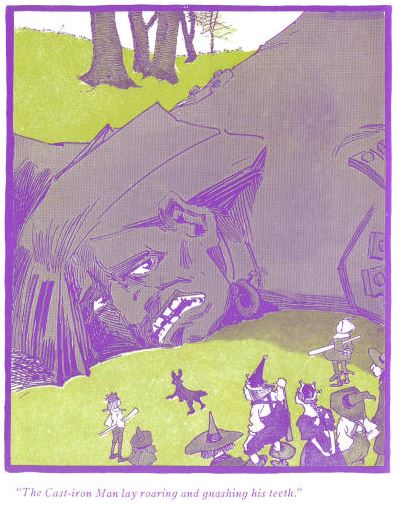
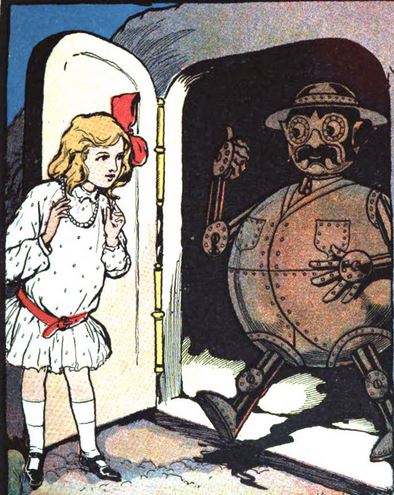
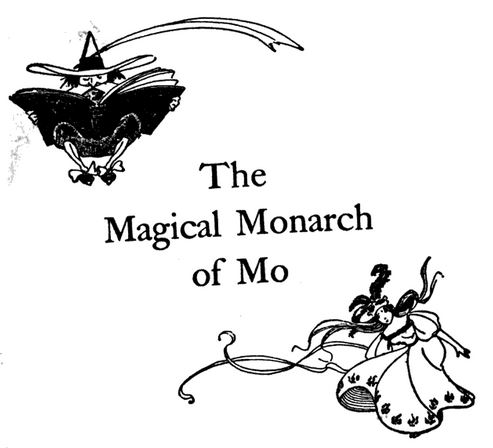
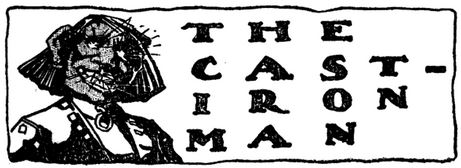
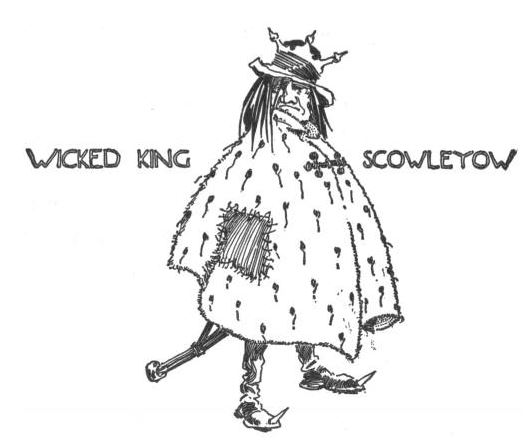
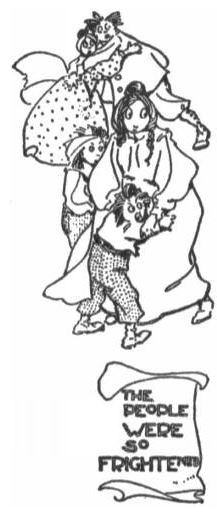
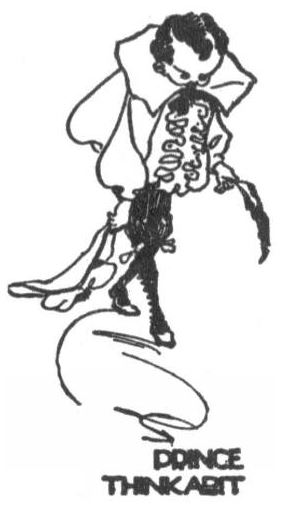
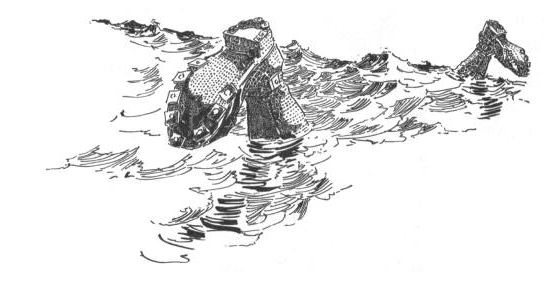
Thanks for illuminating Baum’s robots. Charming story, forgiving that tow line.